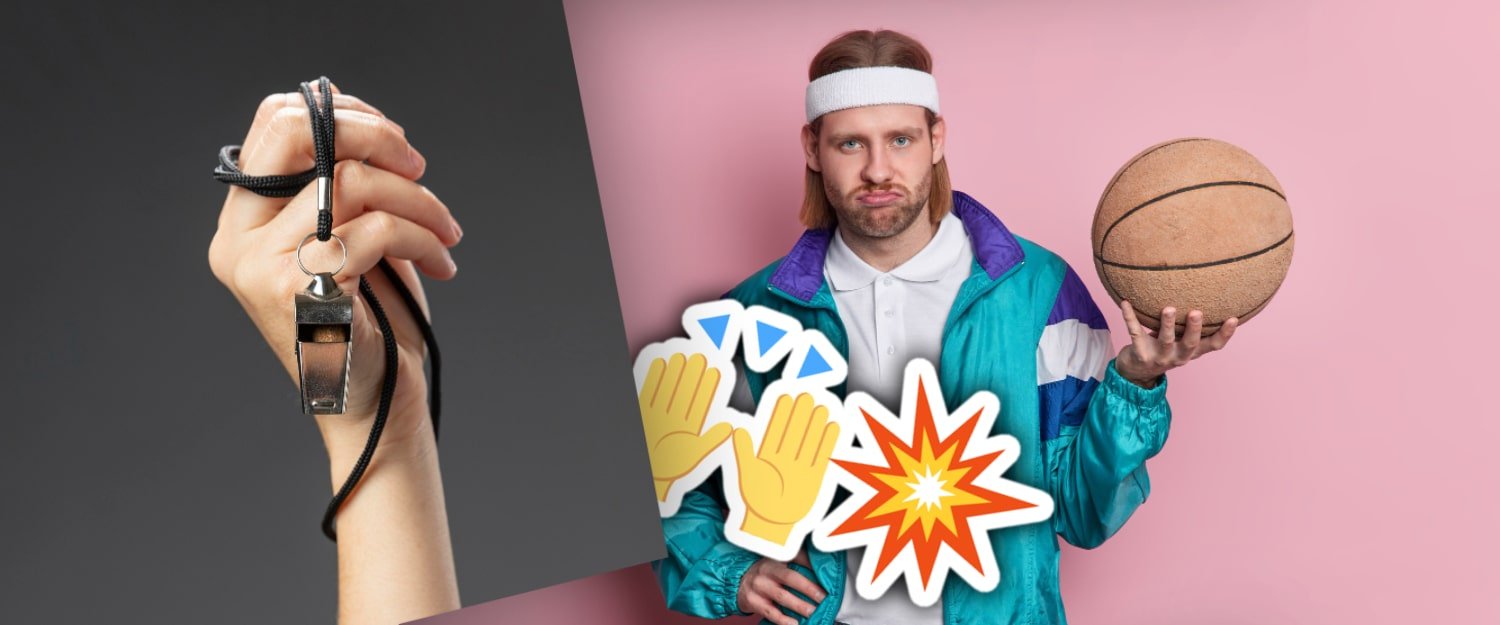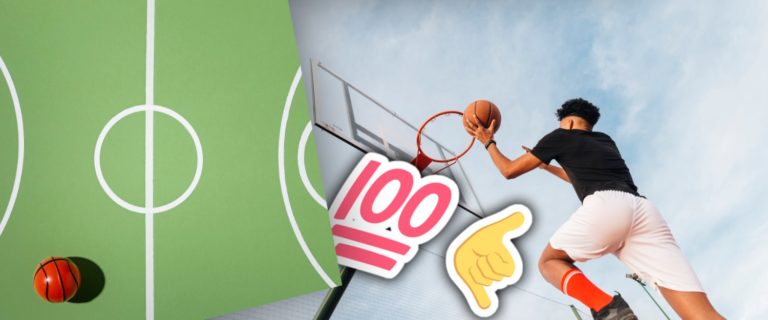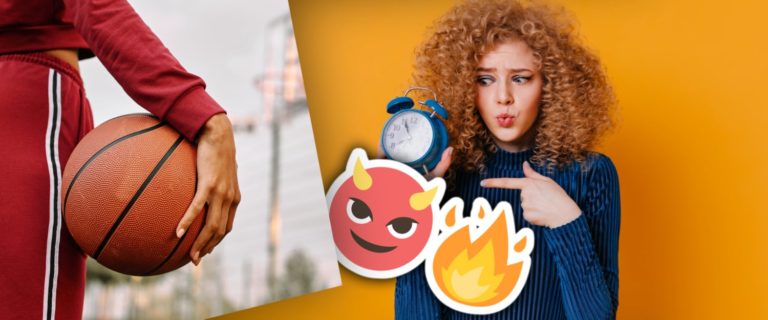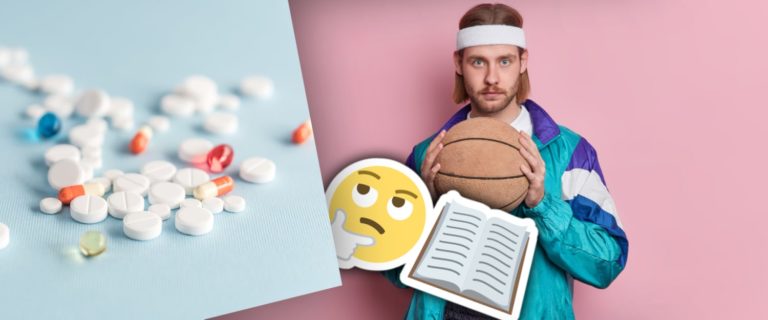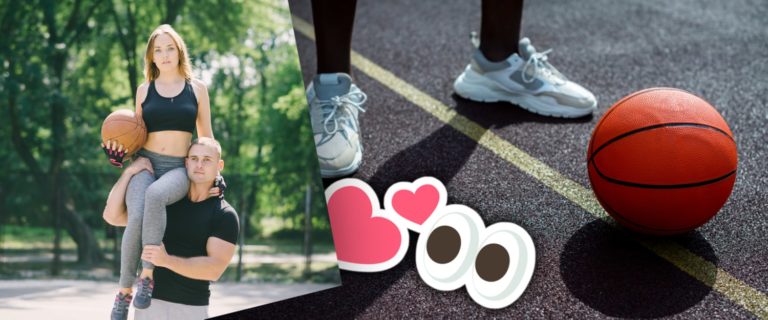Basketball Fouls And Violations: Ultimate Guide
Basketball fouls and violations are an important part of the game. They help ensure that the game is fair, fun, and safe for all players. Some fouls result in free throws, while others lead to technical fouls or ejections from the game! You can find a comprehensive list of fouls and violations below.
Every basketball player needs to know what each foul means (both how it’s conceded and its repercussions). This guide will break down every foul in detail so you’ll never have to wonder again!
What are Fouls and Violations in Basketball?
Fouls and violations in basketball are rule violations that result in the giving of free throws, possession of the ball, or other penalties.
Technical or personal fouls are the two categories that most often apply to fouls. A physical contact between two players that the officials judge improper is referred to as a personal foul. Pushing, grabbing, gripping, tripping, and slapping an opponent are a few examples of personal fouls. A player is eliminated from future play if they receive five personal fouls in one game.
On the other hand, a technical foul is a non-contact offense that typically involves unsportsmanlike conduct. Arguments with the officials, using harsh language, and excessive celebration are a few examples of technical fouls. Technical fouls earn the offender one free throw and the right to keep the ball.
Contrarily, violations are transgressions of the rules that don’t entail colliding with another player physically. Traveling (taking too many steps without dribbling the ball), double dribbling (dribbling the ball with both hands), and goaltending are a few examples of infractions (touching the ball while it is on its downward trajectory towards the basket).
Contrary to fouls, violation give the opposing team possession of the ball.
What are the Types of Fouls in Basketball?
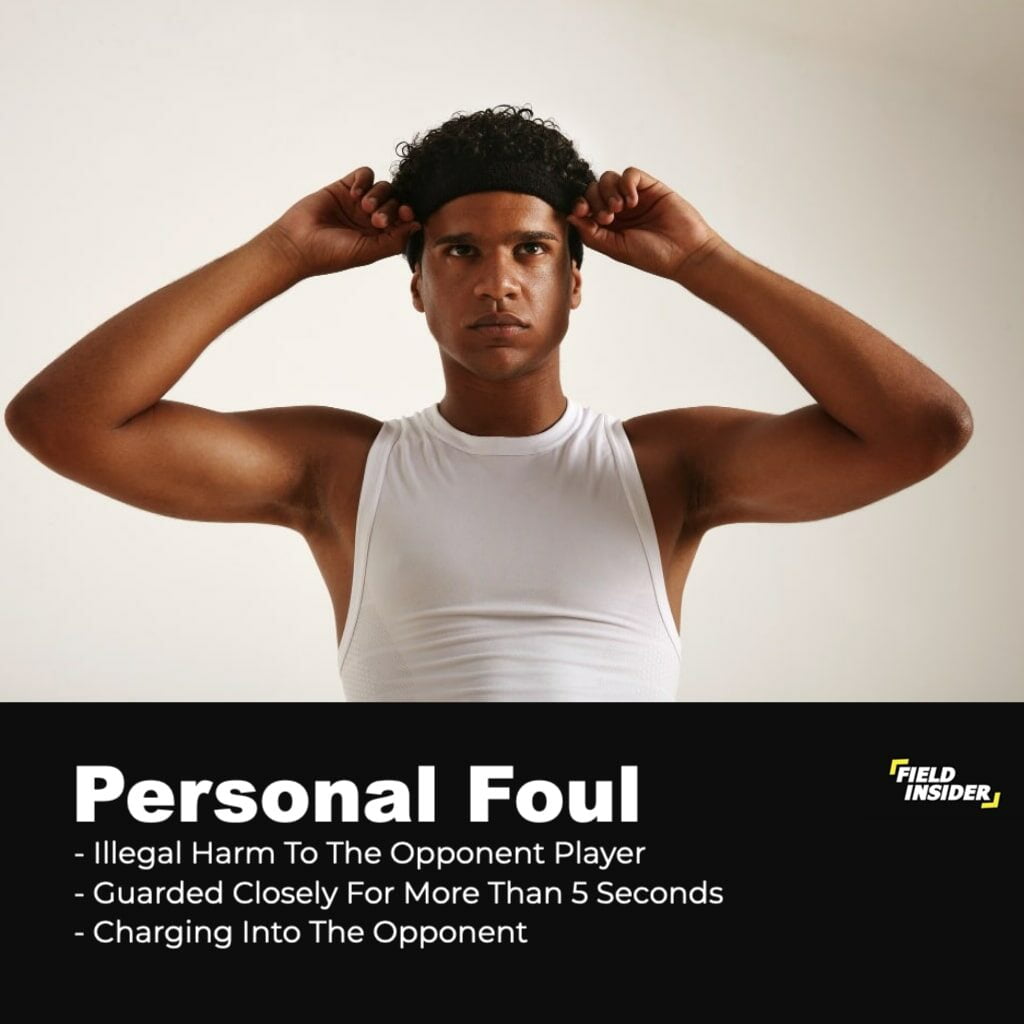
Personal Foul
An illegal physical contact between two players is known as a personal foul. Pushing, clutching, tripping, and slapping an opponent are examples of personal fouls. When a player makes contact with an opponent that is seen to be aggressive, or not in the normal course of play, the referees may declare a personal or even flagrant foul if too excessive.
Depending on the severity of the foul and the quantity of team fouls committed by the other team, the number of free throws awarded to the opposing team after a personal foul is called can range from one to several. A player is also removed from further play if they commit five or six personal fouls in a game, depending on the league rules.
It’s crucial to understand that not all player contact with one another is regarded as a personal foul. Incidental contact can happen occasionally during normal play, and this is typically not regarded as a foul. A personal foul may be called, nevertheless, if the contact is judged to be severe, violent, or needless.
Examples of a Personal Foul
1. Charging
A charging foul occurs when an offensive player runs into a stationary defender who has established a legal guarding position. The defender must be set and stationary before contact is made, and the offensive player must have control of the ball at the time of the contact.
When a charging foul is called, the offensive player loses possession of the ball, and the opposing team is awarded possession.
2. Holding
When a player pulls onto an opponent to restrict their movement, it is considered a holding foul. Holding onto an opponent’s arm or jersey is a form of foul that can happen both on and off the ball. The opposing team is given possession of the ball when a holding foul is called.
3. Reaching In
A reaching foul occurs when a defender makes contact with an offensive player who is in the act of shooting or dribbling the ball. This type of foul is often called when a defender reaches in to try to steal the ball, but instead makes contact with the offensive player. When a reaching foul is called, the offensive player is awarded free throws.
4. Blocking
A blocking foul occurs when a defender makes contact with an offensive player who is in motion and has already started their shooting motion. To be called for a blocking foul, the defender must not have established a legal guarding position, or must have moved into the path of the offensive player.
When a blocking foul is called, the offensive player is awarded free throws if the offensive player was in shooting motion.
5. Over-the-back
When a player reaches over an opponent’s back to try to get the ball, it is considered an over-the-back foul. When a player leaps or leans against an opponent to reach the ball, it is deemed a foul. An over-the-back foul results in possession of the ball going to the opposite team.
Unsportsmanlike conduct
Every sort of action that the officials find unsportsmanlike falls under the wide term of “unsportsmanlike conduct.” Inappropriate physical contact, insulting language, or taunting are examples of this. The team on the other side receives control of the ball and free throws when an unsportsmanlike conduct foul is called.
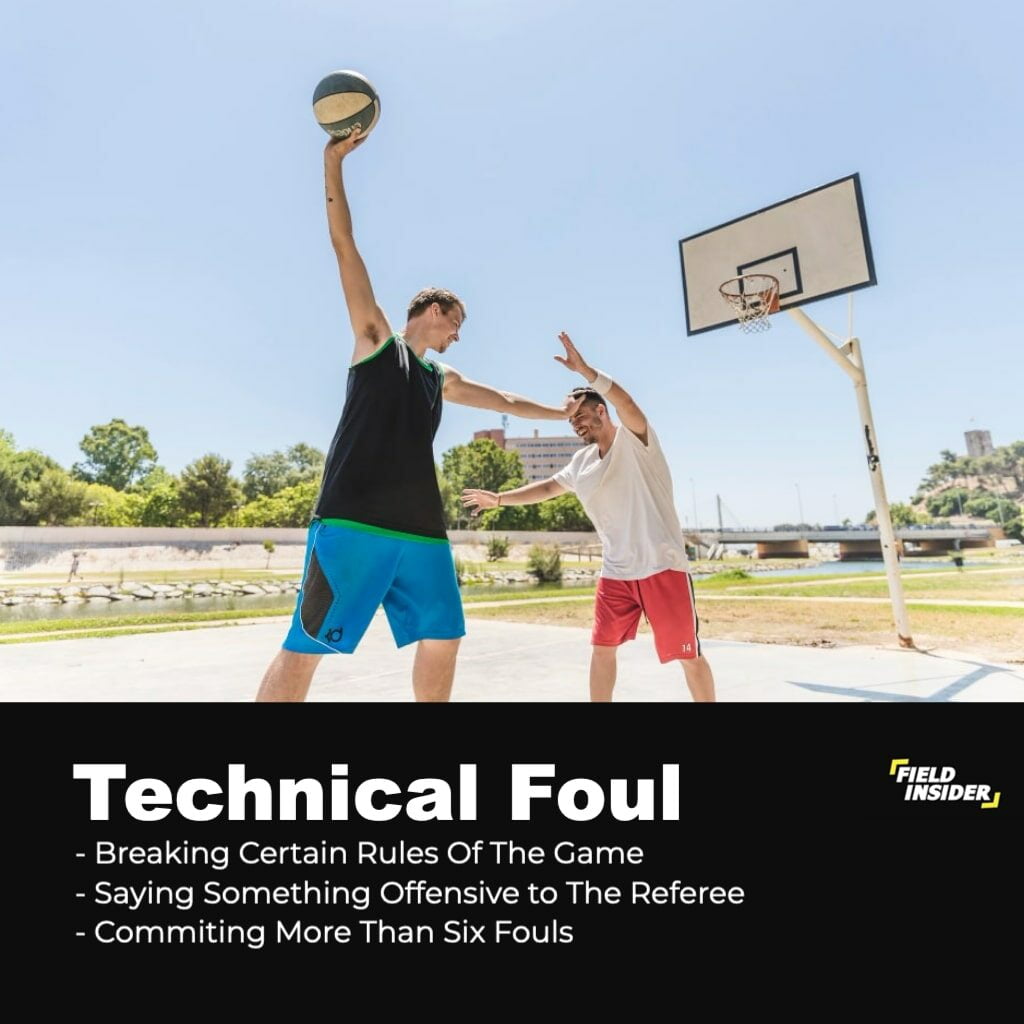
Technical Foul
Without physical contact between players, a technical foul is a rule violation that typically results in a free throw for the other team. Technical fouls are frequently assessed for unsportsmanlike conduct, including arguing with officials, mocking or trash-talking rivals, using profanity, or excessively celebrating.
Personal fouls, which entail physical contact between players and can result in free throws, ejections, or suspensions depending on the severity of the foul, are distinct from technical fouls.
A player or coach in the NBA is automatically ejected after receiving two technical fouls in one contest. A player or coach is also suspended for one game and an additional game for every additional two technical fouls if they accumulate 16 throughout the course of the regular season.
To avoid incurring technical fouls, which can hurt their team’s chances of winning and result in disciplinary action from the league, players and coaches must keep their emotions under control and perform professionally on the court.
Technical foul infractions generally fall into two categories:
Unsportsmanlike Conduct Fouls
These violations occur when something is said to the referees or another official which isn’t meant to be helpful toward resolving an issue on either side; examples include swearing and arguing with officials.
Some unsportsmanlike conduct violations come along with automatic ejection from games after multiple offenses – it varies depending upon where the game takes place.
Excessive Fouls
These fouls occur when a player commits more than six fouls (including personal/flagrant fouls) or three team fouls in one half; they can also be called for multiple technical foul violations. If this happens, that particular player is ejected from the game until their total number of fouls drops below these limits – it’s important to monitor players’ foul counts carefully during games!
Excessive foul violations result in two free throws plus possession at half-court being awarded to all non-fouled teams on either side – just like with other types of fast breaks following offensive rebounds.
Flagrant Foul
Flagrant fouls occur when a player makes illegal contact with an opponent which is both:
- excessive and unnecessary; and
- not likely to result in or cause injury. Essentially, this means that it’s treated as if the foul was committed at full strength (in terms of severity). E.g., no injuries occurred as a direct or indirect result of foul play on either side.
A flagrant foul is one that involves excessive or unwarranted physical contact and could injure the opponent. Flagrant fouls fall within one of two categories: Flagrant Fouls 1 and 2 are serious offenses.
An unnecessary but not malicious foul, such as a hard foul committed in an effort to prevent the opponent from scoring, is referred to as a Flagrant Foul 1. The opposite team often receives two free throws and keeps the ball after committing a Flagrant Foul 1, along with two fouls.
A more serious foul that is regarded malicious and needless, like a hard foul committed with the aim to hurt the opponent, is referred to as a Flagrant Foul 2. A Flagrant Foul 2 typically results in the opponent’s team receiving two free throws and control of the ball, as well as the ejection of the player who committed the foul.
A player who commits a flagrant foul may also be subject to additional league disciplinary action, such as fines or suspensions, in addition to the immediate repercussions of the violation.
To guarantee a safe and fair game for all players, it is crucial for players to grasp the distinction between a regular foul, a flagrant foul 1, and a flagrant foul 2, and to refrain from making needless or deliberate physical contact with their opponents.
Team Foul
Team fouls occur when a team amasses seven or more fouls (including personal/flagrant fouls) during one half. They’re also called whenever five players on the court commit foul violations at once.
Team foul infractions result in two free throws plus possession at midcourt being awarded to all non-fouled teams on either side. However, if both sides manage to avoid fouling for 30 seconds of game time following such an advantage. Play is resumed as normal and any penalty points are waived.
Player Foul
Such fouls occur when a player amasses six or more fouls (including personal/flagrant foul violations) during one game. Player foul infractions result in two free throws plus possession at half-court being awarded to all non-fouled teams on either side.
However, if both sides manage to avoid fouling for 30 seconds of game time following such an advantage, play resumes as normal and any penalty points are waived.
What are the Types of Violations in Basketball?
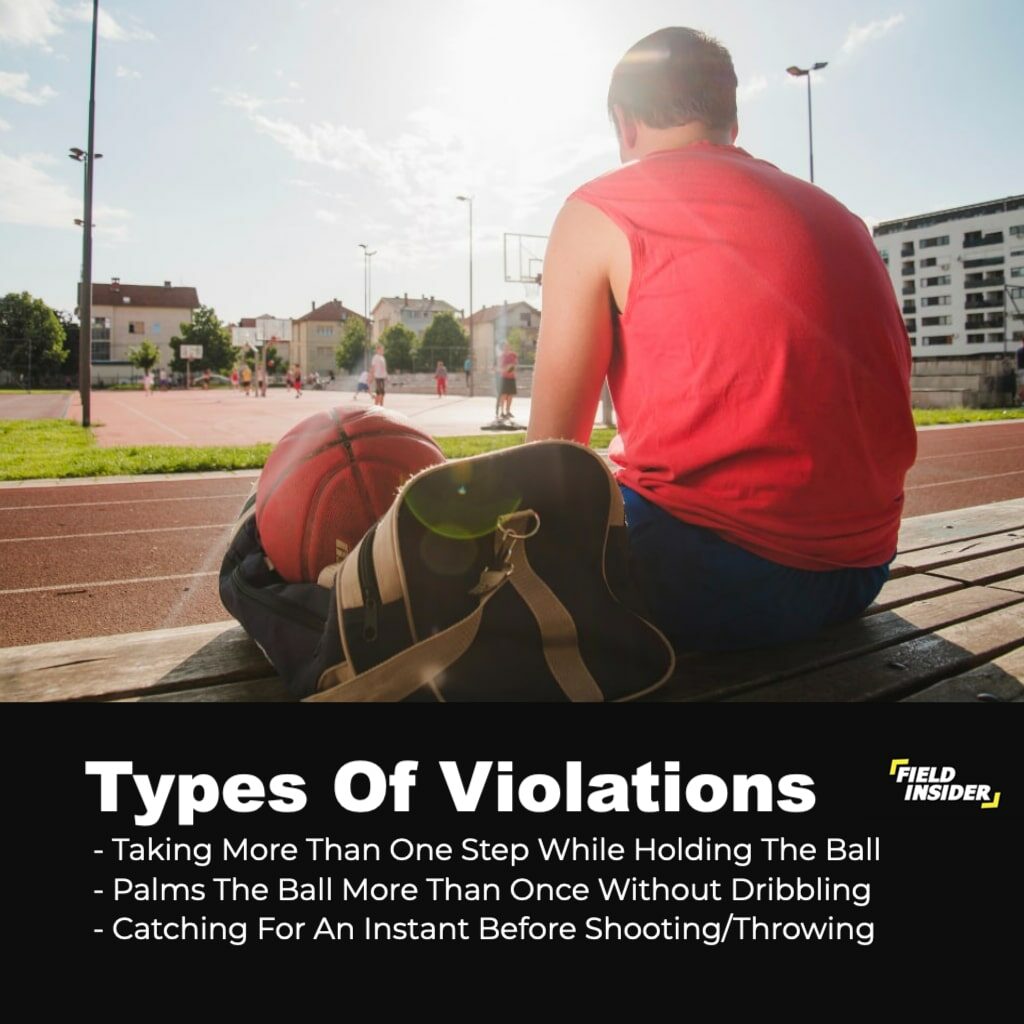
Traveling Violation
Traveling violations in basketball occur whenever a player:
- takes more than one move while holding the ball; or
- gathers momentum by taking steps without dribbling.
In both cases, traveling fouls result in loss of possession – if committed during fast breaks, they also give non-fouled teams on either side “clear path” opportunities to score from any spot within their offensive end’s key (i.e., free-throw line extended).
If a team has already been awarded multiple clear paths off turnovers before this violation/advantage is called, only one is given and penalty points are waived.
Traveling fouls can be called against players who attempt field goals from behind the backboard or its arena wall – these infractions are typically accompanied by one foul shot in addition to possession at half-court to compensate for the (usually missed) attempt.
Palming Violation
This foul occur whenever a player palms the ball without dribbling it. Palming basketball violations are not infractions per se – they can be called or waived by referees as they see fit during games, but only if they judge that no advantage was gained from doing so (hence why this foul isn’t included in official basketball rules).
If palmed while holding the ball at waist-height or lower, these fouls have to result in loss of possession; any other instance results in turnover and non-fouled teams on either side being awarded “clear path” opportunities to score from near half-court (i.e., free-throw line extended).
Double Dribble Violation
Double dribble fouls occur whenever a player:
- touches or attempts to touch the ball after both feet have left its playing surface; and/or
- catches it for an instant before bouncing, throwing, or shooting it again.
Both infractions result in loss of possession – if committed during fast breaks, they also give non-fouled teams on either side “clear path” opportunities to score from any spot within their offensive end’s key (i.e., free-throw line extended).
If a team has already been awarded multiple clear paths off turnovers before this violation is called, only one such chance is given and penalty points are waived. The NBA used to allow double dribbles as long as neither offense nor defense gained an advantage from them – this foul was only introduced as a rule in 1954.
Double dribble fouls can also be called against players who attempt field goals from behind the backboard or its arena wall – these infractions are typically accompanied by one foul shot in addition to possession at half-court to compensate for the (usually missed) attempt.
Held Ball Violation
This basketball violations occur whenever a player holds the ball against an opponent, with no dribbling taking place. Held ball foul infractions result in loss of possession – non-fouled teams on either side are awarded “clear path” opportunities to score from any spot within their offensive end’s key (i.e., free-throw line extended).
If both sides manage to avoid fouling for 30 seconds following such an advantage, play resumes as normal and penalty points are waived. Like traveling violations, players can be called out for double dribble violations after they have caught the ball but before they have released it.
Held fouls can also be called against players who attempt field goals from behind the backboard or its arena wall – these infractions are typically accompanied by one foul shot in addition to possession at half-court to compensate for the (usually missed) attempt.
Backcourt Violation
Backcourt fouls occur whenever a player crosses the halfway line into his team’s backcourt. Without dribbling or passing the ball, including during fast breaks. Backcourt violations are not infractions per se. They can be called or waived by referees.
As they see fit but only if they judge that no advantage has been gained from doing so. Hence why this foul isn’t included in official basketball rules. If there is already foul play on either side when these turnovers take place. It results in “clear path” opportunities for non-fouled teams on either side to score from any spot within their offensive end’s key (i.e., free-throw line extended).
Penalty points are waived both sides manage to avoid fouling for 30 seconds following such an advantage.
Backcourt fouls can also be called against players who attempt field goals from behind the backboard or its arena wall – these infractions are typically accompanied by one foul shot in addition to possession at half-court to compensate for the (usually missed) attempt.
Kicking Violation
Such basketball violations are called when a player kicks the ball with their feet or legs – this includes simple off-ball fouls in which they do not make contact with another player. Kicking foul infractions result in loss of possession and penalty points (assessed to both teams involved at half court).
Free Throw Violation
This basketball violations occur when a player signals to referees that they are fouled in the act of shooting by simply raising their arms. Free throw foul infractions result in one foul shot being awarded to the player who was fouled, either for specific free throws (which vary depending on which particular foul is called) or penalty points (if assessed at half court).
Goaltending Violations
Such basketball violations occur when a player illegally interferes with a shot attempt while it is on its upward flight toward the basket. Goaltending foul infractions result in loss of possession and penalty points (assessed to both teams involved at half court).
Three Seconds Violation
Three seconds basketball violatons occur when a player enters the key of their offensive team without touching the ball, basket, or another member on that side of the court. Three-second violations result in loss of possession and penalty points (assessed to both teams involved at half court).
5 Seconds Violation (Inbounding)
Five seconds foul is called when a player stands in the key (and this includes offensive players) for longer than five consecutive seconds. Five-second violations result in loss of possession and penalty points (assessed to both teams involved at half court).
5 Seconds Violation (Offensive)
Five seconds basketball violations are called when an offensive player remains in the key for longer than five consecutive seconds (offensive players must not remain at least part-way outside of their team’s key). Five-second violations result in loss of possession and penalty points (assessed to both teams involved at half court).
10 Seconds Violation
Ten seconds foul is called when a player stands in the key (and this includes offensive players, who must not remain at least part-way outside of their team’s key) for longer than ten consecutive seconds. Ten-second violations result in loss of possession and penalty points (assessed to both teams involved at half court).
Most Common fouls and violations
here’s a table defining the most common kinds of fouls and violations in basketball:
| Type of Foul/Violation | Definition |
|---|---|
| Personal Foul | Physical contact between players, such as hitting, pushing, or tripping |
| Flagrant Foul 1 | Unnecessary contact that is not considered malicious |
| Flagrant Foul 2 | Unnecessary and malicious contact that may result in injury |
| Technical Foul | Unsportsmanlike behavior, such as arguing with referees or using foul language |
| Double Foul | Two players committing a foul on each other at the same time |
| Charging Foul | Offensive player runs into a stationary defender |
| Blocking Foul | Defender makes contact with the offensive player, preventing them from moving |
| Traveling | Taking more than one step without dribbling or moving the pivot foot |
| Three-Second Violation | Offensive player remains in the key for more than three seconds |
| Five-Second Violation | Offensive player does not pass the ball within five seconds |
| Shot Clock Violation | Failure to attempt a shot within the allotted time |
| Backcourt Violation | Offensive player crosses the midcourt line and then returns to the backcourt |
| Goaltending | Defensive player interferes with a shot that is on its way down into the basket |
It’s important for players and fans to understand the different kinds of fouls and violations in basketball in order to better understand the game and the consequences of various actions on the court.
Conclusion
In conclusion, the fouls listed above are all infractions. That can be incurred by either side during play. However, it should be noted that there are also penalties. That only apply to specific fouls depending on how they were committed. These penalties vary but usually consist of free throws or bonus shots given without any time spent dispossessing possession from an opponent.
If you’re just starting with basketball. Take some time to learn about the fouls and violations that will be called during your games. You can also find more information by looking up books. Or online resources such as this blog post!
Basketball is one of the most popular sports worldwide. So players and coaches at all levels need to know what constitutes foul play. And how they should react when certain fouls are called. Are you ready to start playing?


